Thinking of moving from an Inflatable to a Solid Paddle Board?
So you have been using your Inflatable Paddle Board for a year or two now and have fallen in love with Paddle Boarding...
Now you're asking yourself - Should I go and buy a Solid (composite) Paddle Board?
The short answer is Yes & No 🤓 - stick with us here.
For the majority of paddlers, an Inflatable Paddle Board will perform well enough, however there are a few benefits of a Solid Paddle Board (AKA Composite Paddle Board).
It's the Performance!
In terms of pure paddling performance, a Solid Paddle Board will out perform an Inflatable Paddle Board in all aspects.
It will surf a wave better, paddle faster and likely be a little more stable.
The reason for this is that a Hard Paddle Board (SUP) has very little flex in it compared to Inflatable Paddle Boards (iSUPS) that deflect or bend. Additionally Hard SUPs can be shaped to a much higher performance spec (Inflatable SUPs rail profiles can only be one very rounded unpronounced shape due to the nature of inflatable manufacturing capabilities).
What Shape Hard Paddle Board should I look for?
Ultimately it depends what you want to do. If you want flat water cruising combined with some wave surfing, then opt for a "allrounder" shape (Much like many of the Inflatable Paddle Board shapes on the market). These tend to be around 10-11ft long, and around 30-34 inches wide making for quite a stable board in character. A good tip to note: The Wider the Board the more stable it will be. The longer the board the faster (Glide) it will be, but less manoeuvrable.
Example of a Allrounder Hard Paddle Board Click Here

If you want to focus purely on wave surfing, then look for a more wave oriented shaped board.
Generally wave boards are less stable with pointed noses. In terms of dimensions they tend to be from around 7ft-9ft long and 28-32 inches wide (the wider the board, the more stable).
Example of a Wave shaped Hard Paddle Board Click Here

If you want to purely focus on covering distance as fast as you can, then take a look at Touring or Race shaped Boards.
These boards tend to be longer (to generate more speed/tracking) and narrower in width to decrease drag. Dimensions of Race/Touring boards tend to be 12-14ft long and 23-30 inch wide (again the wider the board the more stable).
Example of a Touring shaped Hard Paddle Board Click Here

Drawbacks of Hard Paddle Boards
The main drawback of Hard Paddle Boards is durability. Hard Paddle Boards tend to be made from Epoxy Fibreglass and this can "ding" when you hit a rock or something hard (as opposed to an Inflatable Board which will just bounce off!).
That said, you can repair Hard Paddle Boards quite easily with Surfboard Epoxy Repair Kits found online.
Storage is another key issue with Hard Boards. They take up more space and require transportation to the water in a van or on a roof rack.
That said I personally find it much less of a faff putting my Hard Board on the roof of my car than constantly having to bag/unbag an Inflatable Paddle Board, and inflating the board with a hand pump each time I want to use it!
Thanks for reading this short article: Hope it helps! Any questions please feel free to email us on info@fatstickboards.com
(Author: Reuben May, Fatstick Founder)

Now you're asking yourself - Should I go and buy a Solid (composite) Paddle Board?
The short answer is Yes & No 🤓 - stick with us here.
For the majority of paddlers, an Inflatable Paddle Board will perform well enough, however there are a few benefits of a Solid Paddle Board (AKA Composite Paddle Board).
It's the Performance!
In terms of pure paddling performance, a Solid Paddle Board will out perform an Inflatable Paddle Board in all aspects.
It will surf a wave better, paddle faster and likely be a little more stable.
The reason for this is that a Hard Paddle Board (SUP) has very little flex in it compared to Inflatable Paddle Boards (iSUPS) that deflect or bend. Additionally Hard SUPs can be shaped to a much higher performance spec (Inflatable SUPs rail profiles can only be one very rounded unpronounced shape due to the nature of inflatable manufacturing capabilities).
What Shape Hard Paddle Board should I look for?
Ultimately it depends what you want to do. If you want flat water cruising combined with some wave surfing, then opt for a "allrounder" shape (Much like many of the Inflatable Paddle Board shapes on the market). These tend to be around 10-11ft long, and around 30-34 inches wide making for quite a stable board in character. A good tip to note: The Wider the Board the more stable it will be. The longer the board the faster (Glide) it will be, but less manoeuvrable.
Example of a Allrounder Hard Paddle Board Click Here

If you want to focus purely on wave surfing, then look for a more wave oriented shaped board.
Generally wave boards are less stable with pointed noses. In terms of dimensions they tend to be from around 7ft-9ft long and 28-32 inches wide (the wider the board, the more stable).
Example of a Wave shaped Hard Paddle Board Click Here

If you want to purely focus on covering distance as fast as you can, then take a look at Touring or Race shaped Boards.
These boards tend to be longer (to generate more speed/tracking) and narrower in width to decrease drag. Dimensions of Race/Touring boards tend to be 12-14ft long and 23-30 inch wide (again the wider the board the more stable).
Example of a Touring shaped Hard Paddle Board Click Here

Drawbacks of Hard Paddle Boards
The main drawback of Hard Paddle Boards is durability. Hard Paddle Boards tend to be made from Epoxy Fibreglass and this can "ding" when you hit a rock or something hard (as opposed to an Inflatable Board which will just bounce off!).
That said, you can repair Hard Paddle Boards quite easily with Surfboard Epoxy Repair Kits found online.
Storage is another key issue with Hard Boards. They take up more space and require transportation to the water in a van or on a roof rack.
That said I personally find it much less of a faff putting my Hard Board on the roof of my car than constantly having to bag/unbag an Inflatable Paddle Board, and inflating the board with a hand pump each time I want to use it!
Thanks for reading this short article: Hope it helps! Any questions please feel free to email us on info@fatstickboards.com
(Author: Reuben May, Fatstick Founder)









